Diverse journeys bring DDS Class of 2025 to the start of dental school17 min read
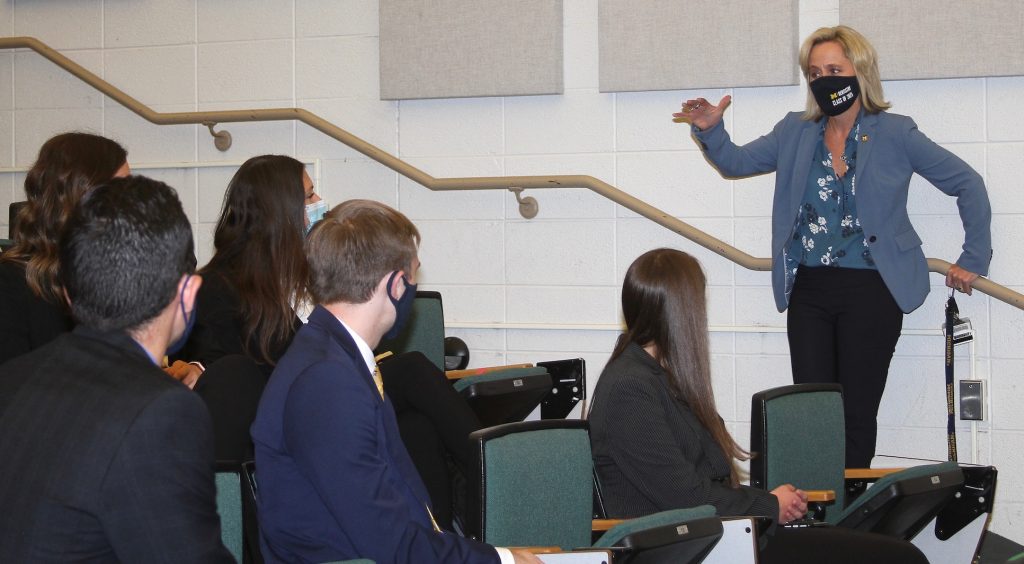
Ann Arbor, Mich., Aug. 13, 2021 – The new first-year class of dental students at the School of Dentistry hails from all corners of Michigan and from coast to coast, with several international connections.
The new class is well into its first weeks of dental school after being welcomed with a hybrid orientation that included online components and a more traditional, in-person arrival in late June. Their on-campus arrival was earlier than the one last year for first-year students, who were delayed during the height of the COVID-19 pandemic.
The 109 members of the Class of 2025 were admitted from 1,867 applicants. They are closely split between Michigan residents (54) and out-of-state students (55). They earned undergraduate degrees from 17 Michigan colleges and universities, and from small colleges and major universities across the country. One class member graduated from Peking University in China. The out-of-state residents in the class come from nearly all of the nearby Upper Midwest states, but many others in the western, southern and northeast parts of the country, including Alaska, California, Texas, Mississippi, Tennessee, Florida, Virginia, New York and Massachusetts, to name several.
The average undergraduate grade point average of the class is 3.8. Six of the students have master’s degrees. In a growing trend at dental schools across the country, women outnumber the men in the class, 64 to 45. Two students are in the school’s Oral Health Sciences program that offers a dual DDS/PhD degree.
In her welcoming remarks to the students during an Orientation Zoom meeting with the class, Associate Dean for Students Dr. Renée Duff said the class has impressive credentials. “We’re proud to have such a great group of future leaders with us in the Class of 2025.”
Duff said she likes to compare the four-year journey of dental school to climbing a mountain because it takes teamwork, just as climbing Mt. Everest requires a collaborative team to navigate the difficult route to the summit. She advised students to bond with classmates, faculty and staff. “You will need many if not all of these people on your team,” she said. “Whether you go through relaxed or white-knuckled, whether you lead the climb or anchor it, you will need to rely on each other at times in order to enjoy the journey and be successful.”
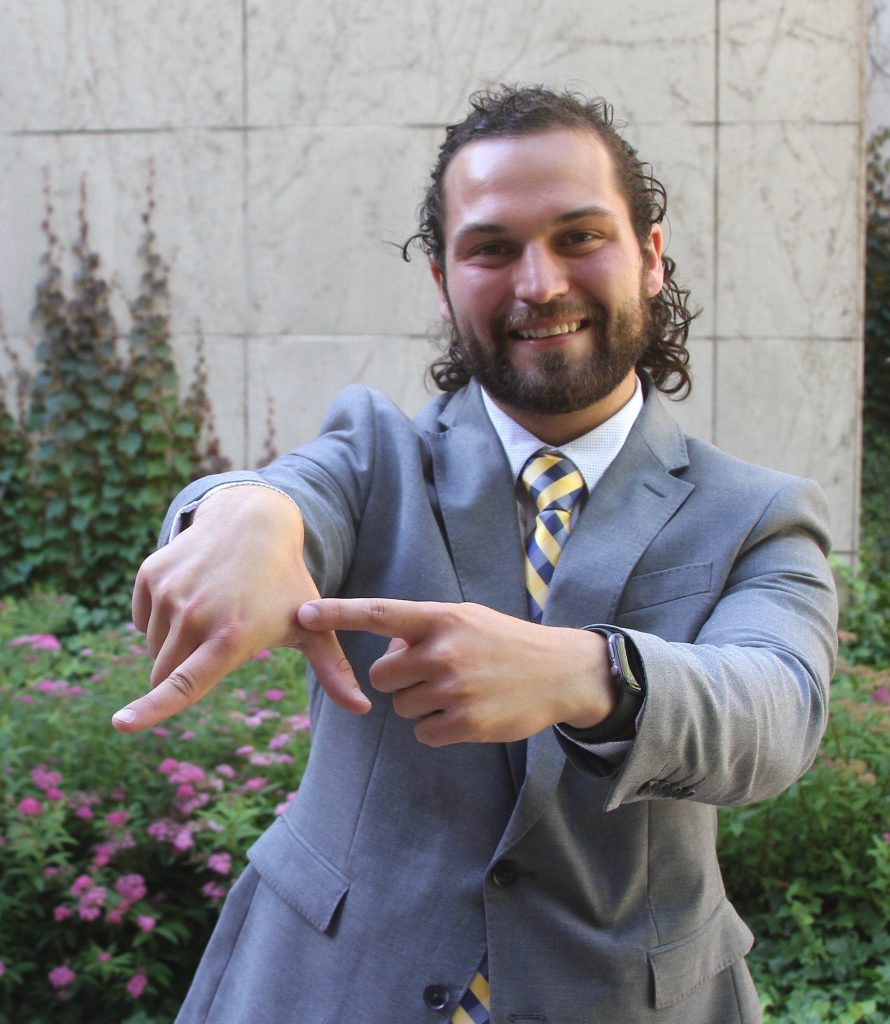
Dean Laurie McCauley thanked the students for choosing the U-M School of Dentistry. She emphasized the long traditions of both the university and dental school. The U-M mission calls on its graduates to “serve the people of Michigan and the world” while “developing leaders who will challenge the present and enrich the future.” She noted the mix of science and service that is the overall goal of the dental school – “to develop a highly skilled competent clinician with a deep understanding of the scientific foundation of dentistry, and the compassion to serve those in need.”
“If you are accepted at the University of Michigan, it means we know you can accomplish all that we have to offer you,” McCauley said. “Our admissions policies are incredibly rigorous, which means that if you are here now, we know you will be successful, and we are with you to walk this path.”
The stories of how and when class members chose dentistry, and why they decided to enroll at the U-M dental school, are as unique and remarkable as the students themselves. Here’s a video with several class members followed by short bios of six class members who shared details of their journeys to Ann Arbor.
Jacob Herremans, from Rockford, Michigan: Jake Herremans is a true Michigander. As an undergraduate at U-M, he was a diver on the Wolverine swim team all four years. He got an early start at the dental school as part of a research team in the lab of Dr. Peter Ma, working with Ben Swanson, a dual DDS/PhD student. Herremans’ family also knows its way around the dental school: His father, Thomas, an orthodontist in Grand Rapids, and his grandfather, Edward, a retired orthodontist, both have degrees from U-M and the dental school.
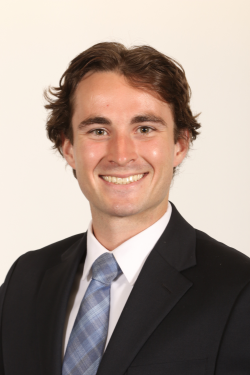
Was becoming a dentist a fait accompli? “Growing up, I was very skeptical. That was the question I was always asked: Are you going to be a dentist like your Dad and Grandpa? When I was younger, I said no. It took me until about the summer after my sophomore year of college that I really decided to get involved with the pre-dental association and figure all that out. I knew I wanted to do something science-related and I really enjoy working with other people. So being able to have both of those together and, at the same time, use my hands rather than sit at a desk, was something that really appealed to me.” Whether he will specialize in orthodontics remains to be seen: He says his father has already counseled that there is no pressure that he become a third-generation orthodontist.
Herremans says his undergrad experience with both the swim team and the dental research will help him navigate dental school. “Research was something that I had never really been super interested in, but I got presented with an opportunity to try it out, and I ended up really loving it,” he said. He presented a poster at the school’s annual Research Day so he understands how important the scientific aspects of dentistry are at the dental school.
On the swim team, he learned a lot about teamwork and leadership. “I saw how different personalities mesh to create that very team-oriented purpose to reach a common goal,” Herremans said. “I think that will be a very good head-start to incorporate myself with a lot of different people and collaborate well.”
Marsha-Kay Hutchinson, from the Point District near Montego Bay, Jamaica: Growing up in Jamaica, Marsha-Kay Hutchinson developed a sense of compassion for the many people who had little access to healthcare, particularly dental care. “There was a lot of neglect to oral health in my community and surrounding communities,” she says. “I saw the need for people to really have access to oral healthcare.” She eventually came to the U.S. to study science, living in northern Virginia and earning her undergraduate degree at Howard University in Washington, D.C., one of the country’s Historically Black Colleges and Universities. After considering whether to become a physician, dentist or nurse, she chose dentistry with an emphasis on science.
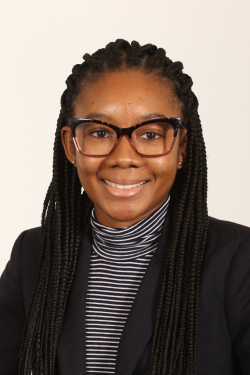
She enrolled in the dual DDS/PhD program at the U-M School of Dentistry and for the last three years has worked on the PhD side, in the lab of Professor Nisha D’Silva, an oral pathologist and cancer researcher. Hutchinson studies the molecular mechanisms underpinning radiation resistance for oral cancer patients. As Hutchinson now begins the DDS portion of the program, she is looking forward to the advantages and challenges of switching from the research bench to clinical care.
“I believe I’ll be tapping into a new side of myself, using a different side of my brain. There is so much flexibility and creativity where research is concerned. I have freedom to explore what I want to explore. With the clinical side of things, things are a little bit more regulated and I’m on a timeline. So I think I’ll have to be more open to following a fixed schedule. But this is where I started in the beginning – my first love was dentistry and clinical care – so I feel like this is my opportunity to actually do that. I am super-excited to start interacting with patients. That is why I chose dentistry in the first place – to reach the underserved and those who don’t have access to care. So I’m going to serve them through my research, but now I’m gaining the skills to serve them with clinical care as well.”
Hutchinson sees the two degrees as complementary. “I’m going to try to do clinical dentistry and academia, perhaps in a translational setting,” she says. “I want to be able to see patients, take the information I see in the clinic back to the lab and work on some projects to answer questions that are clinically informed. Then take the results from the bench back to the patients. … Even if it is not back home directly in Jamaica, there are tons of people all over in America that we need to reach.”
Olivia D’Angelo, from Bloomfield Hills, Michigan: Olivia D’Angelo has wanted to be a dentist since the fourth or fifth grade when she began to shadow her family dentist as he treated her four siblings. It became a running joke with her dentist, Dr. Tom Coburn in Birmingham, Michigan, that she would someday grow up to be a dentist. Her other chief influencer was her uncle, Dr. Jim Brennan, a dentist in Grand Rapids who is a close friend of Coburn; both are alumni of the U-M School of Dentistry.
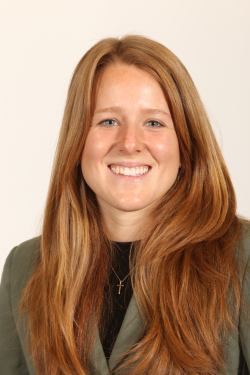
“It was always so comical when I would go into Dr. Coburn’s office. I was always laughing because it was something I could see myself doing. It was so family-oriented. I come from a big family and I loved to see that. Coming here to the dental school, I am so excited to have a new family.”
For her undergraduate studies, D’Angelo left the comfort zone of her immediate family and many more extended family members in Michigan to attend Jacksonville University in Jacksonville, Florida, in order to play intercollegiate lacrosse. Being a full-time varsity athlete while earning her degree in biochemistry was a lesson in managing time, persevering, and learning to meet and collaborate with all sorts of people, she said, lessons that will help her with the rigors of dental school.
As someone who believed since she was a kid that she would attend U-M, at least for dental school, there was an interesting coincidence at Jacksonville when she took advantage of a research opportunity. She began working with a professor who specialized in orthodontics research and who invited D’Angelo to present a poster on her research at the March 2020 Moyers Symposium – an orthodontics conference organized on the U-M campus each year by the School of Dentistry.
D’Angelo said that first entry into orthodontics research may continue at dental school, but she is leaving her options open as she begins this first year. “I’m very excited to be here. I love dentistry. I love working with people and helping the community. I love to incorporate my personality, my art, my creativity and family aspects to everything I do.”
Chiemeziem Nwachukwu, from Oak Park, Michigan, via Orlu, Nigeria: Sometimes a single interaction with another person may confirm a student’s career choice. That was the case for Chiemeziem Nwachukwu, who goes by Chieme (pronounced CHEE-may). Since moving with his family to this country from Nigeria in 2005 when he was a child, Nwachukwu had begun to narrow his career choices to healthcare. His father and members of his extended family were pharmacists, and his mother works in home healthcare. He explored pharmacy a bit, but expanded his search into dentistry by volunteering in Pontiac at the Gary Burnstein Community Health Clinic, which provides free dental care for the underserved.
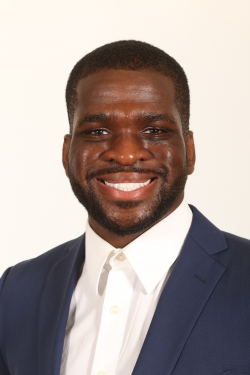
It was there that Nwachukwu says he found his calling, highlighted by an interaction with one particular patient that was particularly moving. The staff had made upper and lower dentures for a woman who had very few teeth left in her mouth. When she arrived for the appointment when her new dentures would be fitted, she was happy and vibrant. “I didn’t know why until we delivered her denture and I handed her the mirror. She started crying and I thought I did something wrong. But it was because, until then, she said she hadn’t smiled in three years. That profound moment still makes me smile a lot. It made me realize, that with dentistry you are actually there with your patient and you actually experience that joy with them.”
Nwachukwu said he’s happy to be finished with general undergraduate courses and onto dental school where each class directly applies to his future career. In his early interactions at the dental school, he’s been impressed by the people he’s met. “Everyone, and I mean everyone, is really inviting,” he said. “The people really resonated with me and made me feel like this is home. I’m going to be comfortable here for four years, especially if I’m going to dedicate so much time to it. I just feel beyond confident that I’m in the right place.”
Rachel Rangel Paradela, from Miami, Florida: It’s probably the most common question classmates ask each other in the early days of getting to know each other, but for Rachel Rangel Paradela, it’s her least favorite question: “Where are you from?” That’s because the answer is a bit complicated and it takes a while to explain that she was born in Toronto, Ontario, in Canada, then moved to Cuba where she lived from ages 2 through 11. Then it was back to Canada for several years and then it was on to Miami, Florida, where she finished high school and graduated from college.
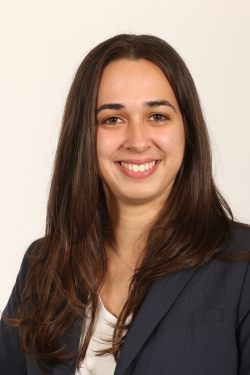
It’s been an interesting trip in reaching Michigan, she says, influenced significantly by her time living in – and her family connections to – a third-world country. After leaving Cuba as a child for Toronto, she was usually the only Hispanic student in her elementary and high school classes in Canada, where the resources and lifestyle were a world away from Cuba. More importantly for her eventual career choice, however, was the fact that her mother worked as a dentist in Cuba. Rachel remembers how hard her mother worked there for wages that weren’t at a professional level. Later, when she and her mother lived in Miami, her mother no longer practiced but encouraged her daughter to consider the profession. “She always talked about how hard it was to become a dentist, but how it was the greatest job in the world. So that was my first insight to look into dentistry,” Rachel says. “And then all the pieces started fitting together. I loved working with my hands all the time. I loved interacting with people. So I started shadowing dentists and (realized) that it really was the profession for me.”
At Florida International University in Miami, Rachel majored in biological science and minored in chemistry. She did some research that was applicable to dentistry, but says her favorite part of undergrad was volunteering for a program called Caring for Miami that provided dental care for low-income, uninsured patients. It’s too early to predict where her career will lead, but her experiences so far lead her to know one thing for certain: “I want to continue giving back.”
Andrew Uggeri, from Mattawan, Michigan: Undergraduate students selecting coursework and majors to prepare for dental school rarely choose naval architecture and marine engineering. But that’s the background of Andrew Uggeri (pronounced U-jerry). He started his undergrad years at U-M as a pre-dent student, but changed course and followed the lead of an older brother who had chosen naval architecture. Their family, like many in the Great Lakes State, is a boating family. Uggeri earned not only a bachelor’s degree in the marine specialty but stayed for a master’s as well, then worked for two years as a naval architect at a company in Virginia.
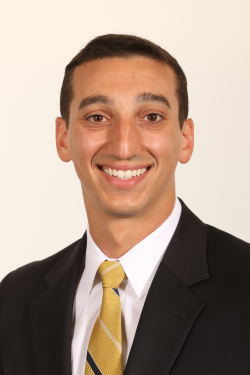
“It was good, but it helped me realize I wanted more interaction with people,” he says. “I spent a lot of time by myself in a cubicle, and I also wasn’t working as much with my hands, which was why I got into engineering.” As he began to consider a career change, he had a good dentistry resource in his older sister, Christine, who just graduated from the dental school earlier this year. The more he thought about it, the more dentistry made sense. “This is something I get to use my hands more, I get to interact with people, still kind of use that engineering mind in the sense of building things, creating things, so it just worked into place and fit.”
“Naval architecture is all about boats and boats are pretty complex three-dimensional shapes. There’s not a lot of flat surfaces, so I think that will carry right into dentistry. Teeth are a little bit more complicated than the hull of a boat, but it’s the same idea – trying to conceptualize something in 3-D, especially looking at it in 2-D on a piece of paper. Hopefully, that will translate well.”
“It’s a long road ahead, but it’s doable. I’ve got my sister to encourage me and give me the little tips and tricks along the way. I’m looking forward to getting into the clinic and working with my hands and getting back to the things I am really passionate about.”
###
The University of Michigan School of Dentistry is one of the nation’s leading dental schools engaged in oral health care education, research, patient care and community service. General dental care clinics and specialty clinics providing advanced treatment enable the school to offer dental services and programs to patients throughout Michigan. Classroom and clinic instruction prepare future dentists, dental specialists and dental hygienists for practice in private offices, hospitals, academia and public agencies. Research seeks to discover and apply new knowledge that can help patients worldwide. For more information about the School of Dentistry, visit us on the Web at: www.dent.umich.edu. Contact: Lynn Monson, associate director of communications, at [email protected], or (734) 615-1971.
